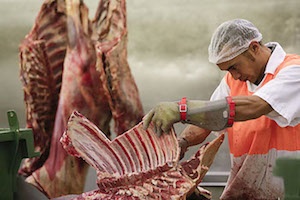Bulgaria: Lamb Market Trends and Import Impact

Lamb prices
: dynamics and trends According to SAPI, on January 8, 2025, the purchase price of live weight lambs was BGN 11.59 per kilogram excluding VAT. This is 4.4% more than in January 2024. Over the past three years, Bulgaria has seen a steady increase in lamb prices, which affects all levels - from purchasing to retail. If at the beginning of 2022, the purchase prices of lambs did not exceed BGN 6 per kilogram, then by the beginning of 2024 they had already reached BGN 11.
In the wholesale segment, the cost of lamb MEAT in the first days of 2025 was BGN 25.27 per kilogram, which is 6.6% more than in the previous year. Retail prices increased even more significantly - by 14.3%, reaching BGN 27.76 per kilogram including VAT. This increase in prices can be attributed to several factors, including a decrease in domestic production and an increase in demand for meat .
Production and import
According to preliminary data from the agrostatistics of the Ministry of Agriculture, sheep and goat meat production in Bulgaria has decreased over the past year. In the first nine months of 2024, 142.8 thousand animals were slaughtered in the country, which is more than 21% less than in the same period of 2023. This decrease in production was the result of a number of factors, including changes in demand, increased costs of feed and other inputs, as well as the impact of external economic conditions.
Imports of sheep meat from both EU and third countries have also decreased, creating additional challenges for local producers. Although average prices for lamb meat in Bulgaria remain below the EU average, they still exceed prices in neighboring Greece, which could lead to higher prices on the domestic market and a decrease in the competitiveness of Bulgarian producers.
Prospects and challenges
The situation on the lamb meat market in Bulgaria requires close monitoring. On the one hand, growing imports from Greece may provide consumers with more affordable meat, but on the other hand, it poses a threat to local producers, who are facing higher prices and reduced production volumes.
In order to remain competitive, Bulgarian producers need to adapt to changes in the market, possibly by increasing product quality and improving marketing. It is also important to pay attention to internal factors, such as the development of livestock farming and support for local farmers, which can help strengthen the position of Bulgarian lamb on the market.
In conclusion, the lamb market in Bulgaria is at a crossroads, and its further development will depend on many factors, both internal and external. Maintaining a balance between imports and local production will be key to ensuring sustainability and availability of meat for consumers in the future.
Read together with it:
- Belstat reported how much grain, milk, meat, and vegetables are produced in Belarus per capita.November 14, MINSK . Belarus produces 913 kg of grain, 958 kg of MILK, 341 kg of potatoes, and 304 kg of vegetables per capita, according to a review by the National Statistical Committee for the Day of Agricultural and Processing Industry Workers, BELTA reports. The country also produces 78 kg of fruits and berries, 147 kg of livestock and poultry (slaughter weight), and 4......
- UniCredit заявил о галактических усилиях из-за санкций против РоссииUniCredit старается не нарушить «более 15 тыс. санкций», а также не «совершать ошибки», которые позволят изъять его активы в России, заявил гендиректор. После начала военной операции банк начал рассматривать возможность ухода Итальянский банк UniCredit прилагает «галактические усилия», пытаясь соблюсти международные санкции в отношении своего российского подразделения. Об этом заявил генеральный д...
- Низкое предложение и устойчивый спрос: в Аргентине растут цены на мясоЦены на говядину снова выросли, что отразилось на полках супермаркетов и в мясных магазинах. За последние две недели розничные цены выросли на 8–12%, а на некоторые популярные отрубы рост превысил 15% по сравнению с октябрем. Тем не менее, продажи остаются высокими: потребители продолжают покупать, принимая новые цены и закрепляя тенденцию, которая повторяется каждый год в конце года, когда спрос ...
- Китайский рынок мяса: консолидация, меры безопасности и проблема субпродуктов«Мы завершаем выставку CIIE в Шанхае, в целом хорошую выставку, где мы видим консолидированные цены, как это было с начала года, но в то же время рынок ожидает решения по защитной мере, определения которой должны быть даны в конце ноября», — сказал он Valor Agregado Agro. Лидер пояснил, что глобальная ситуация характеризуется «колебаниями на международном рынке, вызванными интенсивной геополитичес...


